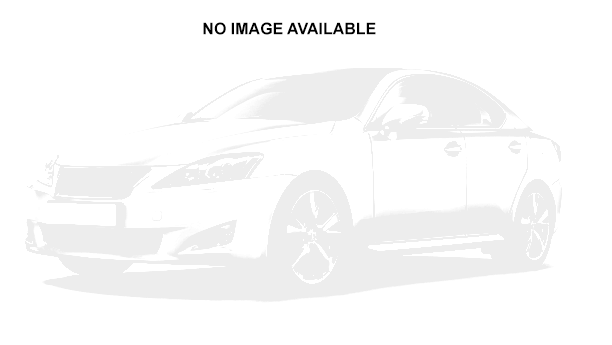
2006 Chrysler PT Cruiser


Key Specifications for 2006 Chrysler PT Cruiser






Buyer’s Guide
For 2006, the Chrysler PT Cruiser undergoes numerous changes. The High-Output turbocharged engine now puts out 230 horsepower, up from 220 hp.
On the outside, there are updated front and rear fascias, a new front grille with winged badge and chrome accents, new headlamps, round fog lamps, and a body-colour spoiler on the liftgate. Inside, there’s an all-new interior, including new seat trims and fabric choices; a new instrument panel with larger gauges; rotating air vents; analogue clock; a higher-mounted radio; a new passenger grab handle; a larger glove box; a new centre console with sliding armrest; and bright cupholder accents on the Limited and GT. All models receive advanced multi-stage air bags. New radio options include a Boston Acoustics premium sound system, and all models get MP3 play capability. All models now have standard power locks, courtesy map lamps, and available six-way power driver seat; rear window switches are higher; there’s an available Electronic Vehicle Information Centre (EVIC); and a new acoustic package provides improved sealing and sound absorption to reduce noise. New exterior colours are Marine Blue Pearl and Magnesium Pearl.
The line-up changes slightly for 2006. Fixed-roof models are available as the PT Cruiser, Classic, Touring and GT; convertible models retain their 2005 configuration of Touring and GT models.
All PT Cruiser models have a 2.4-litre, four-cylinder engine that comes one of three ways: naturally aspirated for 150 hp, turbocharged for 180 hp, or High-Output turbo with 230 hp. The middle one may be the best of the three for everyday use, offering plenty of passing power and running on regular fuel, although it’s only available with an automatic transmission. The base engine’s a bit underpowered for pulling the relatively heavy little car around.
The PT Cruiser uses the 150 hp engine, coupled with a five-speed manual transmission that can be upgraded to a four-speed automatic, and includes cloth seats, CD/MP3 player, speed-sensitive power locks, engine immobilizer, power windows, 65/35 fold-and-tumble removable rear seat, 15-inch steel wheels and floor mats.
The Classic starts with the 150 hp engine but can be optioned up to the 180 hp turbocharged engine. It adds keyless remote, illuminated entry, fold-flat front passenger seat, multi-position rear shelf panel, interior assist handles, additional 12-volt power outlet, power mirrors and vehicle information centre.
The Touring also uses the 150 hp or optional 180 hp engine, and adds air conditioning, leather-wrapped wheel, cruise control, six-way power driver’s seat, side air bags, sunscreen glass, alarm system, garage door opener, fog lamps, 16-inch aluminum wheels, “touring-tuned” suspension and bright exhaust tip.
The GT uses the 230 hp turbocharged engine exclusively, and adds heated leather seats, 17-inch painted aluminum wheels, four-wheel disc brakes with ABS and low-speed traction control, sport-tuned suspension, large chrome exhaust tip, bright pedals, CD/MP3 player and unique centre stack bezel.
The convertible Touring and GT models offer the same equipment as the fixed-roof models, but add a beige or black power soft top with boot, sport bar with integrated dome lamps, easy-entry front seats and cargo area pass-through.
The PT Cruiser is almost a mini-minivan, offering upright seating for five (the convertible seats four), excellent visibility, and considerable cargo space for the car’s size. The rear 60/40 seats fold forward or can be removed entirely for a flat floor. The rear cargo area contains a clever table that can be adjusted to several positions, flipped over to form a waterproof plastic floor covering, or even pulled forward and turned into a table for campsite dining. When equipped with a fold-flat front passenger seat, the PT can haul home a load of eight-foot boards with the rear hatch closed.
The convertible ups the fun factor for relatively low dollars. The “basket handle” isn’t a roll bar; it’s there to reduce buffeting, and it hides under the roof when it’s raised. The top lifts and lowers quite easily, with just a twist of a handle and then the touch of a button, although attaching the boot is a fiddly and annoying task. The lowered roof steals a lot of rearward visibility. Naturally, the PT’s cargo-carrying abilities suffer as well; although the trunk is still huge by ragtop standards, the lid opens upward and makes loading it difficult.
Alone in its retro segment when it was introduced, the PT Cruiser now faces contenders, the most noticeable being the new-for-2006 Chevrolet HHR. It offers its own brand of retro styling (the same designer had a hand in both), excellent cargo capacity and similar seating, standard air conditioning in all models and a base price that’s $2,680 under the cheapest PT. The equally new Mazda5, while definitely not retro, also carries people (six of them, actually) and cargo in style; the Suzuki Aerio, Ford Focus ZXW, Toyota Matrix and clone Pontiac Vibe should also be considered.
Review & Compare:
Photos
No content available
AutoTrader Review


This vehicle has not yet been reviewed












